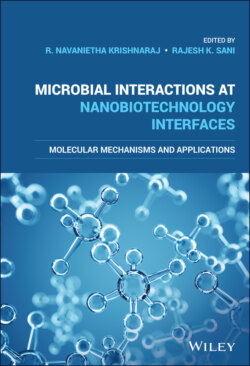Читать книгу Microbial Interactions at Nanobiotechnology Interfaces - Группа авторов - Страница 32
1.5.1 Mechanism of Antibiotic Resistance
ОглавлениеThe mechanism of bacterial antibiotic resistance can be categorized into intrinsic and extrinsic. The antibiotic resistance mechanism that fixed in the genetic core of the organisms is an intrinsic mechanism encoded in chromosomes. This may include the enzyme system which inactivates antibiotics, nonspecific efflux pump systems, and permeability barrier mechanisms (Cox & Wright, 2013; Fajardo et al., 2008). AcrAB/TolC efflux pump in E. coli is one of the well‐studied intrinsic resistance systems. These efflux systems are generally very nonspecific and help in exporting different antibiotics, detergents, dyes, and disinfectants (Nikaido & Takatsuka, 2009). Similarly, a mechanism involving permeability barrier in E. coli and other Gram‐negative bacteria for vancomycin is also an intrinsic resistance system where the outer membrane acts as a permeability barrier (Arthur & Courvalin, 1993). On the other hand, the resistance system that is obtained from other organisms such as producers by horizontal gene transfer is called the acquired resistance system. Unlike the intrinsic resistance system, the resistance elements of the acquired systems are generally embedded in plasmids and transposons. Acquired resistance system includes the plasmid‐encoded specific efflux pumps and enzymes that can alter or modify the antibiotics or the target of antibiotics (Bismuth et al., 1990).
According to Wang, Hu, and Shao (2017), the resistance mechanism can be categorized into different subdivisions on the basis of the biochemistry at the protein level target alterations, passive or inactive enzyme generation, active efflux pumps, permeability barrier, biofilm formation, elimination and emergence of certain specific protein. It has been noted that in the same bacterium there may exist two or more simultaneous mechanisms from the aforementioned categories as resistance mechanism such as antagonist induction through metabolic pathway and production of competitive inhibitor to counteract the antibiotics. In general, the molecular mechanisms of antibiotic resistance are divided into three types: (i) antibiotic modification, (ii) antibiotic efflux, and (iii) target modification or bypass or protection mechanisms (Wang et al., 2017).
